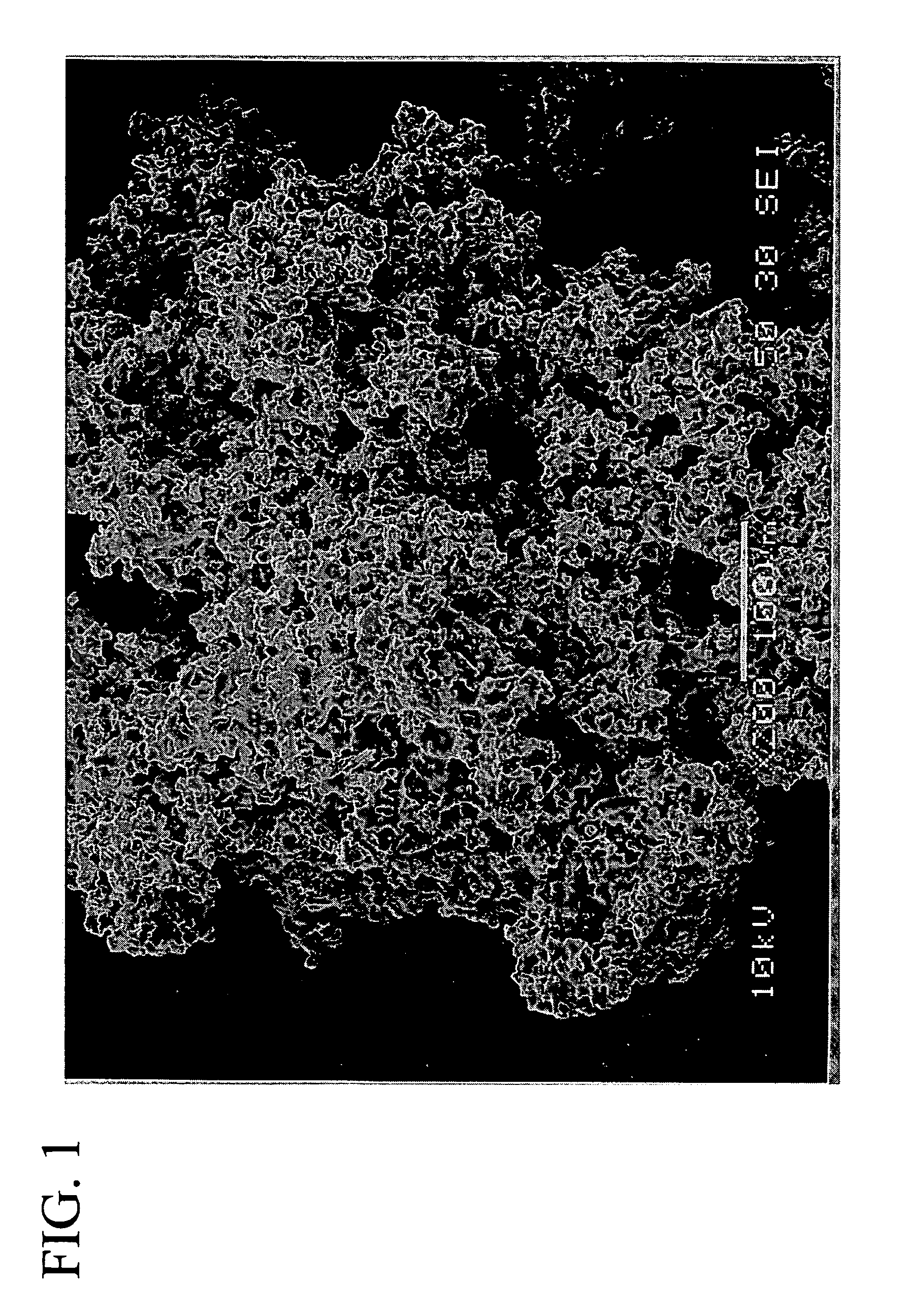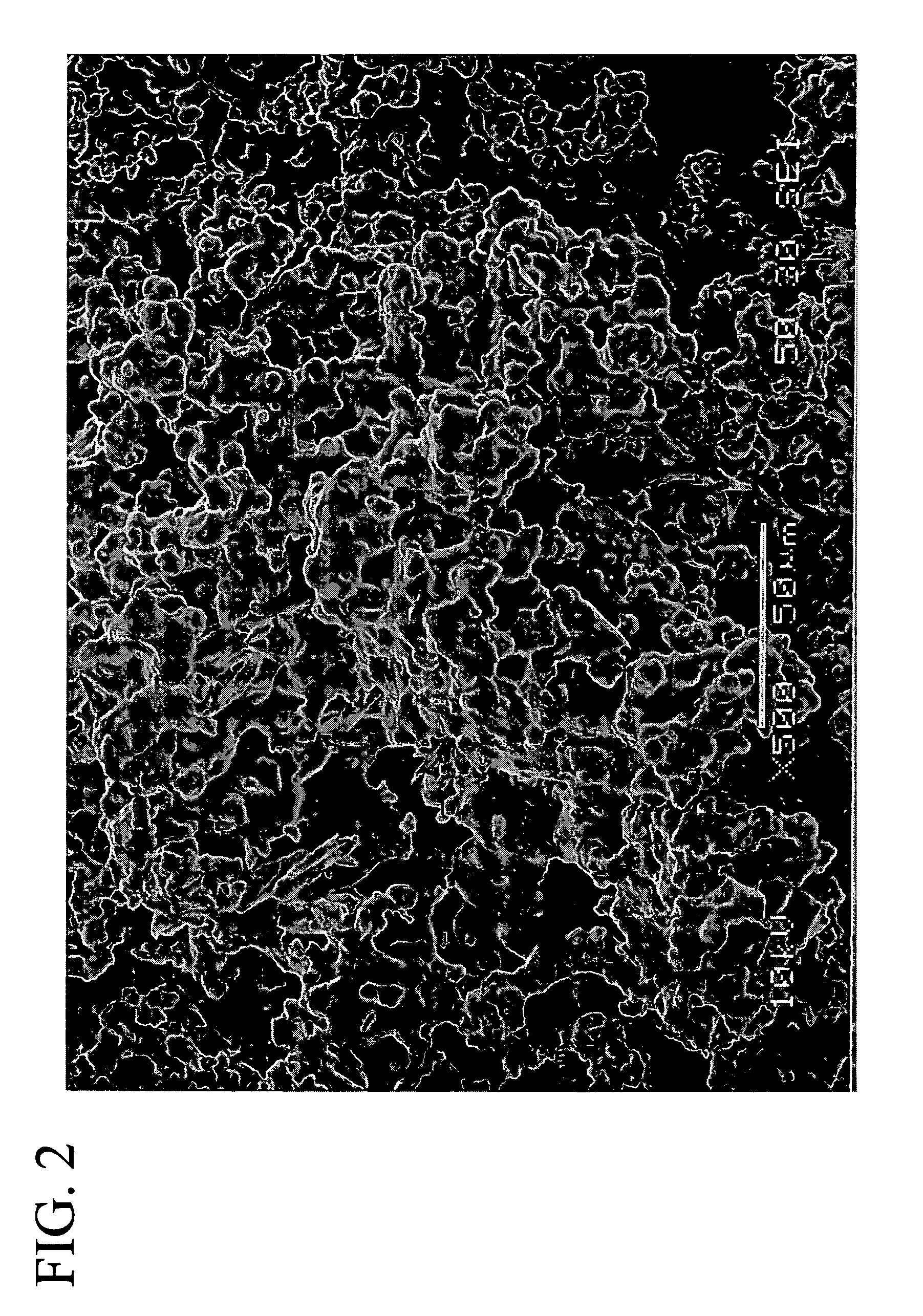Method for producing core-shell type highly liquid absorbent resin particles
a production method and resin technology, applied in the direction of coatings, other chemical processes, chemistry apparatus and processes, etc., can solve the problems of inadequate blood absorption, uneven distribution of particles, occurrence of leakage, etc., to achieve superior blood absorption, reduce blood absorption, and superior liquid absorption
- Summary
- Abstract
- Description
- Claims
- Application Information
AI Technical Summary
Benefits of technology
Problems solved by technology
Method used
Image
Examples
reference example 1
[0120]187.7 parts by mass of ion exchange water were charged into a reaction vessel provided with a stirrer, dropping apparatus, refluxing apparatus and nitrogen gas feed tube followed by heating to 93° C. in the presence of a nitrogen atmosphere. Next, 124.3 parts by mass of acrylic acid and an aqueous solution containing 9.8 parts by mass of sodium persulfate and 61.29 parts by mass of ion exchange water were dropped in at the same temperature over 2 hours.
[0121]Following completion of dropping, the reactants were allowed to react for 6 hours at the same temperature, and then the temperature was lowered to 25° C. Next, a 30% by mass aqueous solution of sodium hydroxide was added to prepare an acrylic resin aqueous solution having a non-volatile content of 35% by mass, Gardner viscosity of C-D, and pH of 2.61.
[0122]100 parts by mass of the aforementioned acrylic resin aqueous solution were charged into a different reaction vessel provided with a stirrer, dropping apparatus, refluxi...
reference example 2
[0123]187.7 parts by mass of ion exchange water were charged into a reaction vessel provided with a stirrer, dropping apparatus, refluxing apparatus and nitrogen gas feed tube followed by heating to 93° C. in the presence of a nitrogen atmosphere. Next, 124.3 parts by mass of acrylic acid and an aqueous solution containing 3.7 parts by mass of sodium persulfate and 61.29 parts by mass of ion exchange water were dropped in at the same temperature over the course of 2 hours.
[0124]Following completion of dropping, the reactants were allowed to react for 6 hours at the same temperature, and then the temperature was lowered to 25° C. Next, a 30% by mass aqueous solution of sodium hydroxide was added to prepare an acrylic resin aqueous solution having a non-volatile content of 35% by mass, Gardner viscosity of H-I, and pH of 2.57.
[0125]100 parts by mass of the aforementioned acrylic resin aqueous solution were charged into a different reaction vessel provided with a stirrer, dropping appa...
reference example 3
[0126]187.7 parts by mass of ion exchange water were charged into a reaction vessel provided with a stirrer, dropping apparatus, refluxing apparatus and nitrogen gas feed tube followed by heating to 93° C. in the presence of a nitrogen atmosphere. Next, a mixture of 121.2 parts by mass of acrylic acid and 6.4 parts by mass of acrylamide and a solution containing 9.8 parts by mass of sodium persulfate and 61.29 parts by mass of ion exchange water were dropped in over the course of 2 hours.
[0127]Following completion of dropping, the reactants were allowed to react for 6 hours at the same temperature, and then the temperature was lowered to 25° C. Next, a 30% by mass aqueous solution of sodium hydroxide was added to prepare an acrylic resin aqueous solution having a non-volatile content of 35% by mass, Gardner viscosity of C-D, and pH of 2.45.
[0128]100 parts by mass of the aforementioned acrylic resin aqueous solution were charged into a different reaction vessel provided with a stirre...
PUM
| Property | Measurement | Unit |
|---|---|---|
| particle diameter | aaaaa | aaaaa |
| temperature | aaaaa | aaaaa |
| temperature | aaaaa | aaaaa |
Abstract
Description
Claims
Application Information
 Login to View More
Login to View More - R&D
- Intellectual Property
- Life Sciences
- Materials
- Tech Scout
- Unparalleled Data Quality
- Higher Quality Content
- 60% Fewer Hallucinations
Browse by: Latest US Patents, China's latest patents, Technical Efficacy Thesaurus, Application Domain, Technology Topic, Popular Technical Reports.
© 2025 PatSnap. All rights reserved.Legal|Privacy policy|Modern Slavery Act Transparency Statement|Sitemap|About US| Contact US: help@patsnap.com



